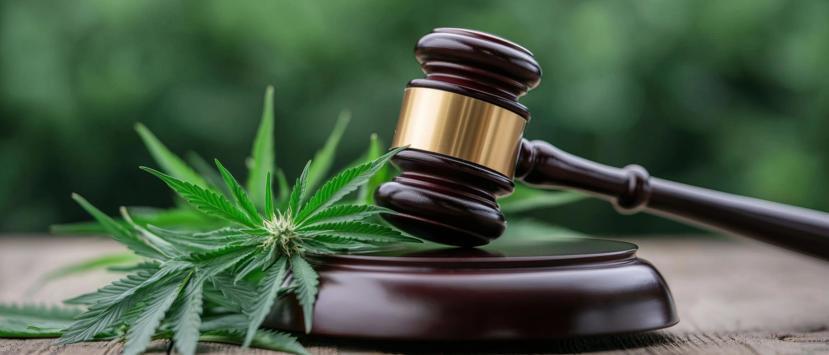Understanding Medical Marijuana Access in the U.S : A Nationwide Overview

Dr. Saqlain Sarwar is a Dentist Practicing in Al Jalila Children's Hospital | Al Jaddaf - Al Jaddaf Dubai. Dr. Sarwar specializes in preventing, diagnosing, and treating diseases and conditions associated with the mouth and overall dental health. Dentists are trained to carry out such treatment as professional cleaning,... more
As the conversation surrounding medical marijuana continues to evolve, understanding its legal landscape across the United States becomes increasingly important. With varying laws and regulations from state to state, patients seeking relief through medical cannabis face a complex web of access points. This article aims to provide a comprehensive overview of medical marijuana access in the U.S., highlighting key aspects such as state laws, patient eligibility, and the application process.
The Legal Landscape of Medical Marijuana
The legal status of medical marijuana in the United States is a patchwork of state laws and federal regulations. While the federal government still classifies marijuana as a Schedule I substance under the Controlled Substances Act, many states have taken steps to legalize its medical use. As of now, over 30 states, have enacted laws permitting the use of medical marijuana.
State vs. Federal Law
The dichotomy between state and federal law creates significant challenges for patients and healthcare providers. While states have the authority to regulate medical marijuana programs, federal law can complicate access, particularly for patients who require banking services or transportation across state lines. This inconsistency often leaves patients in a precarious position, as they navigate a system that can be both supportive and restrictive.
State-Specific Regulations
Each state that has legalized medical marijuana has its own set of regulations governing its use. These regulations typically cover aspects such as qualifying medical conditions, the process for obtaining a medical marijuana card, and the types of products available. For instance, some states may allow only specific forms of cannabis, such as oils or edibles, while others may permit the use of flowers. Understanding these nuances is crucial for patients seeking to utilize medical marijuana for therapeutic purposes.
Qualifying Conditions for Medical Marijuana
To access medical marijuana, patients must typically demonstrate that they have a qualifying medical condition. These conditions vary by state but often include chronic pain, epilepsy, multiple sclerosis, and cancer, among others. Some states have broader definitions, allowing for conditions like anxiety or PTSD.
Common Qualifying Conditions
Chronic pain is one of the most commonly cited conditions for medical marijuana use. Many patients suffering from debilitating pain find relief through cannabis, which can provide an alternative to traditional pain management methods. Other frequently recognized conditions include:
Seizure disorders
Glaucoma
HIV/AIDS
PTSD
Severe nausea
Emerging Conditions and Research
As research into the therapeutic benefits of cannabis continues, more conditions are being considered for inclusion in state programs. For example, some states have begun to recognize conditions like autism spectrum disorders and inflammatory bowel diseases. The evolving nature of this field means that patients should stay informed about potential changes to qualifying conditions in their state.
The Application Process for Medical Marijuana
Obtaining a medical marijuana card involves a multi-step process that can differ significantly from one state to another. Generally, patients must first consult with a healthcare provider who is knowledgeable about medical cannabis and can evaluate their eligibility based on state-specific criteria.
Consultation with Healthcare Providers
Finding a healthcare provider who is willing to recommend medical marijuana can be one of the most challenging aspects of the process. Not all providers are familiar with cannabis as a treatment option, and some may have reservations about its use. Patients are encouraged to seek out practitioners who specialize in cannabis medicine or who have experience with the application process.
Submitting the Application
Once a patient receives a recommendation, they must complete an application to obtain a medical marijuana card. This application typically requires personal information, proof of residency, and documentation of the qualifying condition. Some states also require a fee, which can vary widely. After submission, patients often face a waiting period before receiving their card, which can range from a few days to several weeks.
Understanding Dispensary Access by State
Upon receiving a medical marijuana card, patients can access dispensaries where cannabis products are sold. However, the type and availability of products differ depending on the state. For instance, states like Colorado and California offer a wide array of product choices, including dried flowers, concentrates, tinctures, and edibles. In contrast, more regulated markets such as Minnesota have a narrower selection that focuses on processed forms like oils and tablets. Patients visiting a Minnesota dispensary will find products that adhere to strict state guidelines, often emphasizing pharmaceutical-grade standards and measured dosing.
Ensuring Safe and Legal Purchases
Dispensaries are subject to strict regulations, including licensing requirements and quality control standards. Patients should ensure they are purchasing from licensed dispensaries to guarantee product safety and efficacy. Many dispensaries also provide educational resources to help patients understand how to use medical marijuana effectively.
Choosing the right cannabis product can be overwhelming, especially for first-time users. Patients are encouraged to consult with dispensary staff, who can provide guidance based on individual needs and preferences. Factors such as dosage, method of consumption, and desired effects should all be considered when selecting a product.
Social Stigma and Misinformation
Despite the growing acceptance of medical marijuana, patients still face significant challenges in accessing care. Stigma, lack of provider knowledge, and varying state laws can create barriers to effective treatment.
The stigma surrounding marijuana use persists, often leading to misconceptions about its safety and efficacy. Patients may feel hesitant to discuss their use of medical cannabis with healthcare providers or family members due to fear of judgment. Education and advocacy play crucial roles in addressing these misconceptions and promoting a more informed understanding of medical marijuana.
Financial and Legal Limitations
Legal barriers also remain a significant concern. Patients may face difficulties with insurance coverage, as many plans do not cover medical marijuana expenses. This lack of financial support can make accessing treatment prohibitively expensive for some individuals. Advocacy for policy changes at both the state and federal levels is essential to address these disparities and improve access to medical marijuana.
Looking Ahead: The Future of Medical Marijuana Access
The future of medical marijuana access in the United States is likely to be shaped by ongoing research, evolving public opinion, and legislative changes. As more states consider legalizing medical cannabis, the potential for a more standardized approach to access may emerge.
Continued research into the therapeutic benefits of cannabis will be vital in shaping future policies. As scientific evidence mounts, it may influence lawmakers to expand qualifying conditions and improve access for patients. Additionally, increased funding for research could lead to the development of new cannabis-based treatments.
The Importance of Advocacy and Collaboration
Advocacy efforts at both the grassroots and institutional levels will be crucial in advancing medical marijuana access. Patients, caregivers, and healthcare providers must work together to promote awareness and push for legislative changes that support equitable access to medical cannabis. By fostering a more supportive environment, the potential for medical marijuana to serve as a viable treatment option can be fully realized.
In conclusion, understanding medical marijuana access in the U.S. requires navigating a complex landscape of laws, regulations, and personal circumstances. As the field continues to evolve, staying informed and engaged will empower patients to make the best choices for their health and well-being.








